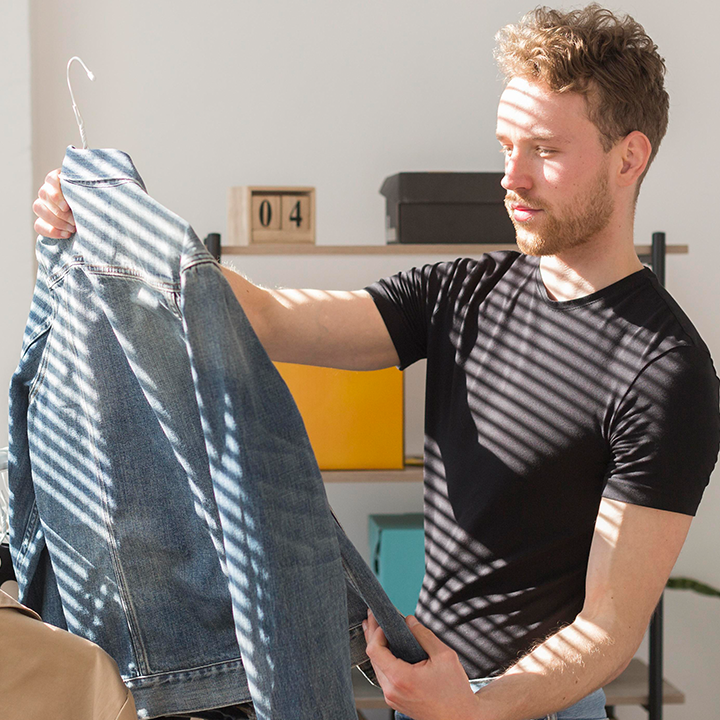
Why Fabric Choice Changes Your Style and Comfort
When building a wardrobe, the focus often falls on colors, patterns, and fit, but the type of fabric you choose is equally crucial. Fabric affects not only the look of a garment but also how it feels when worn. The right material can elevate your style, improve comfort, and ensure longevity, while the wrong choice can make even a well-designed outfit look off or feel uncomfortable. Understanding different fabrics, their qualities, and how they interact with your daily activities is essential for creating a wardrobe that works in both style and function.
Natural vs. Synthetic Fabrics
Fabrics fall broadly into two categories: natural and synthetic. Natural fabrics, such as cotton, linen, and wool, are breathable, soft, and generally comfortable for long-term wear. Cotton, for instance, is versatile and works for casual and semi-formal outfits. Linen is lightweight and ideal for warm climates, while wool provides warmth in colder seasons. Synthetic fabrics, like polyester, nylon, or blends, often offer durability, wrinkle resistance, and easy maintenance. Each category has its strengths, and choosing the right fabric depends on the environment, activity level, and the desired aesthetic.
Comfort and Breathability
One of the most immediate ways fabric affects style is through comfort. Breathable fabrics allow air circulation, preventing overheating and ensuring garments maintain their shape throughout the day. For example, a cotton or linen shirt provides natural airflow, keeping the wearer comfortable while maintaining a polished appearance. On the other hand, non-breathable fabrics may trap heat or moisture, causing discomfort and reducing confidence. Prioritizing comfort through fabric choice ensures that style does not come at the expense of ease.
Drape and Structure
Fabric also impacts the drape and structure of clothing, which influences overall style. Lightweight materials like silk or fine cotton create fluid movement and a relaxed silhouette, whereas heavier fabrics like wool or structured blends hold shape and convey a more formal, tailored look. Understanding how a material interacts with the body helps in selecting pieces that enhance natural lines and present the intended aesthetic. A poorly chosen fabric can distort fit, make garments look baggy, or create unflattering folds, undermining the intended style.
Texture and Visual Appeal
Texture is another key factor where fabric choice directly affects style. Smooth fabrics often convey a clean, minimalist aesthetic, while textured fabrics, such as tweed or corduroy, add depth and visual interest. Combining textures thoughtfully can create a sophisticated look, even with a simple palette. The tactile quality of fabric also contributes to perceived quality; soft, well-finished fabrics often appear more refined, while rough or stiff materials can make an outfit seem casual or unfinished.
Maintenance and Longevity
How easy a fabric is to maintain also impacts how consistently stylish a wardrobe remains. Fabrics that resist wrinkles, fading, or pilling preserve the garment’s appearance over time. Cotton and polyester blends, for instance, often require less delicate care than pure linen or silk, which can wrinkle easily or need special handling. Choosing fabrics that align with your lifestyle ensures clothing remains functional and stylish, reducing the frustration of frequent repairs or replacements.
Seasonal Considerations
Different fabrics suit different seasons, affecting both comfort and appearance. Breathable, lightweight fabrics are ideal for warm weather, while dense, insulating fabrics are best for colder climates. Seasonal fabrics not only enhance comfort but also allow clothing to hold its intended shape. A wool sweater retains warmth without appearing bulky, and a linen shirt offers a crisp, cool look during summer months. Selecting fabrics according to climate ensures that style does not compromise practical comfort.
Expressing Personal Style Through Fabric
Fabric choice is a subtle but powerful way to express personal style. Smooth, polished fabrics can convey sophistication, while textured or patterned fabrics suggest a more relaxed, individual approach. Combining different materials thoughtfully can create layered, dynamic outfits that feel intentional. Being mindful of fabric properties allows for a wardrobe that not only looks visually appealing but also feels good to wear, reinforcing confidence and presence.
Ultimately, the fabric you choose is as important as color, pattern, or cut in defining both style and comfort. By understanding the qualities of different fabrics, considering breathability, texture, drape, and maintenance, you can build a wardrobe that looks refined, feels comfortable, and lasts longer. Thoughtful fabric selection ensures clothing functions as intended, creating a seamless balance between style, comfort, and practicality. Paying attention to this often-overlooked element elevates everyday outfits, making fashion choices more deliberate, polished, and enjoyable.




